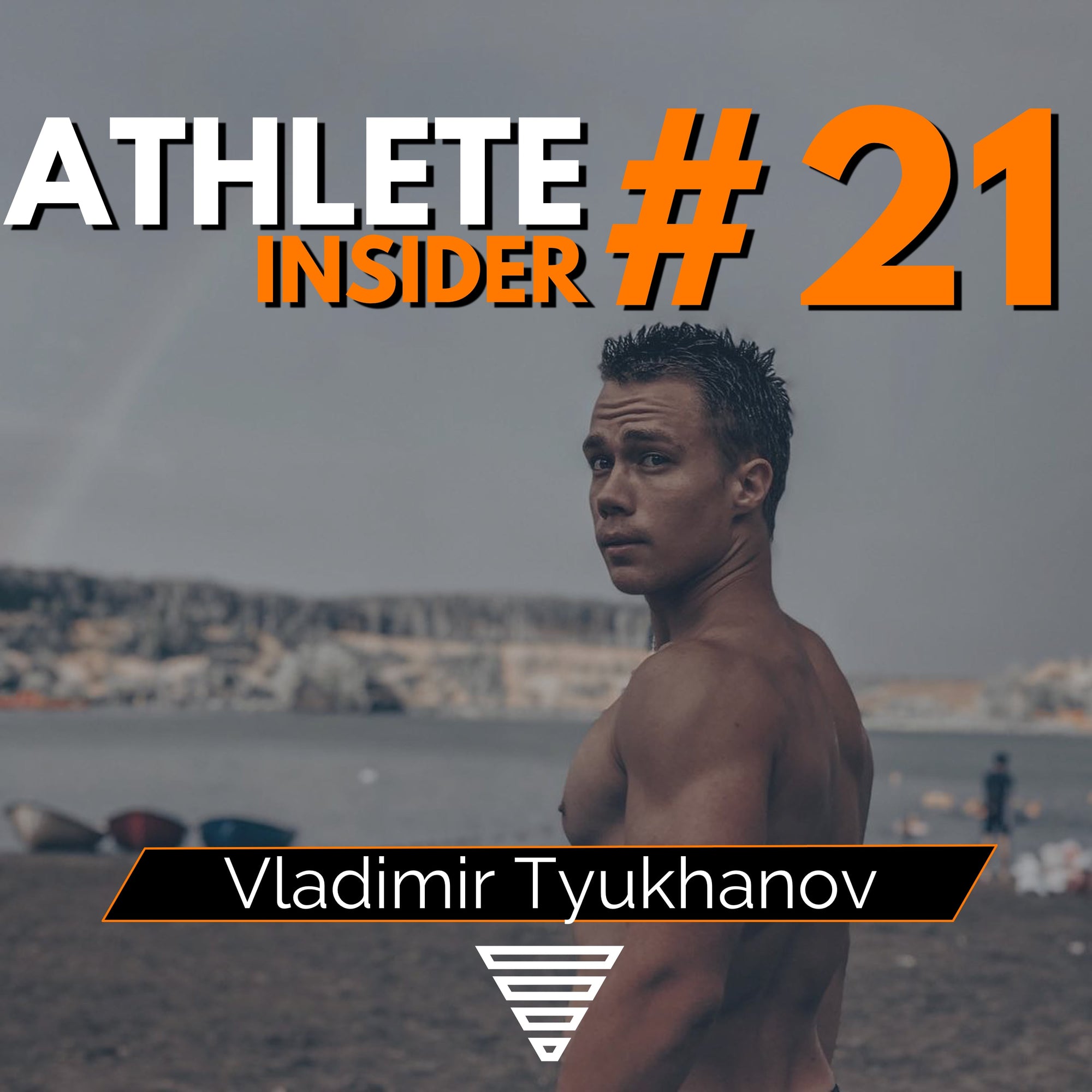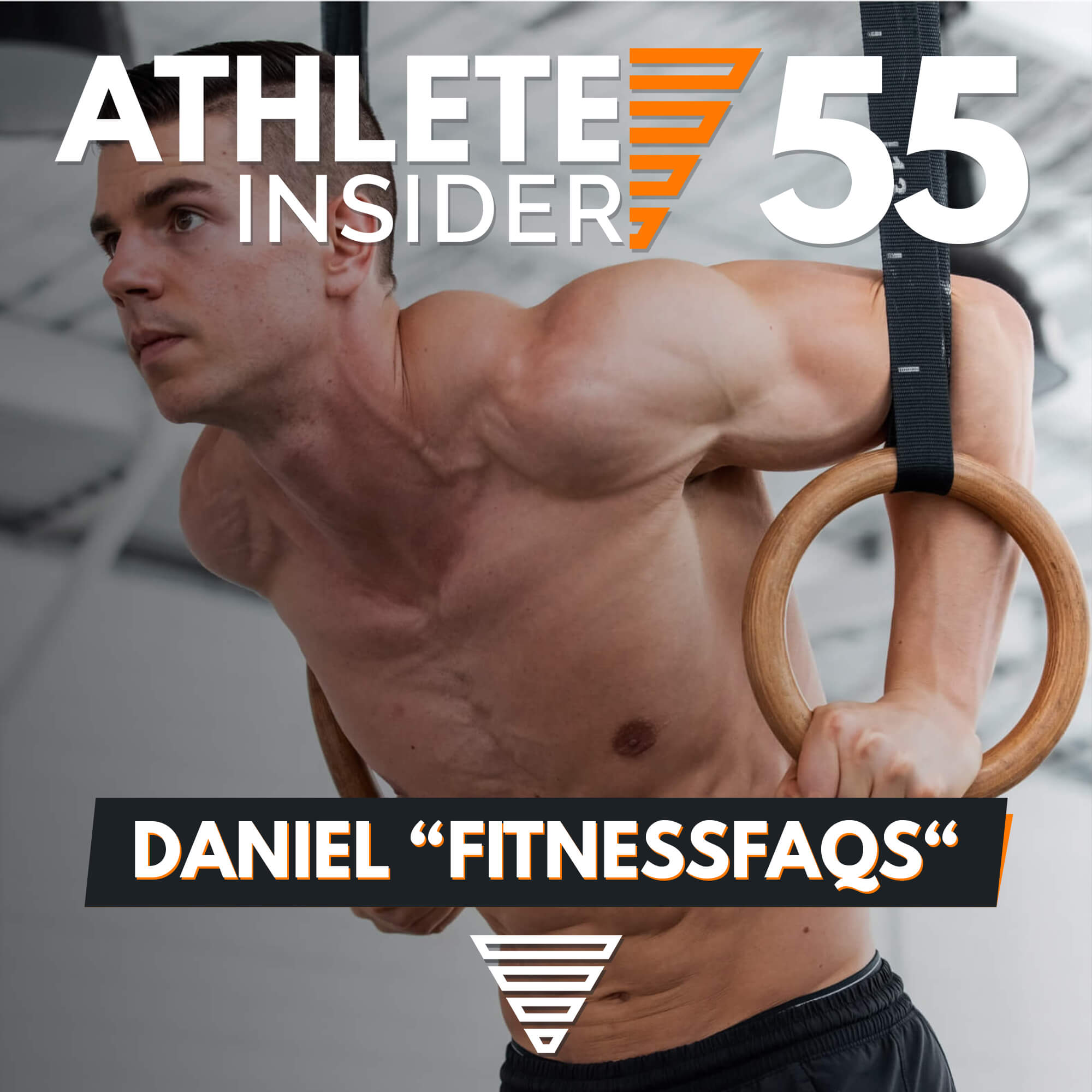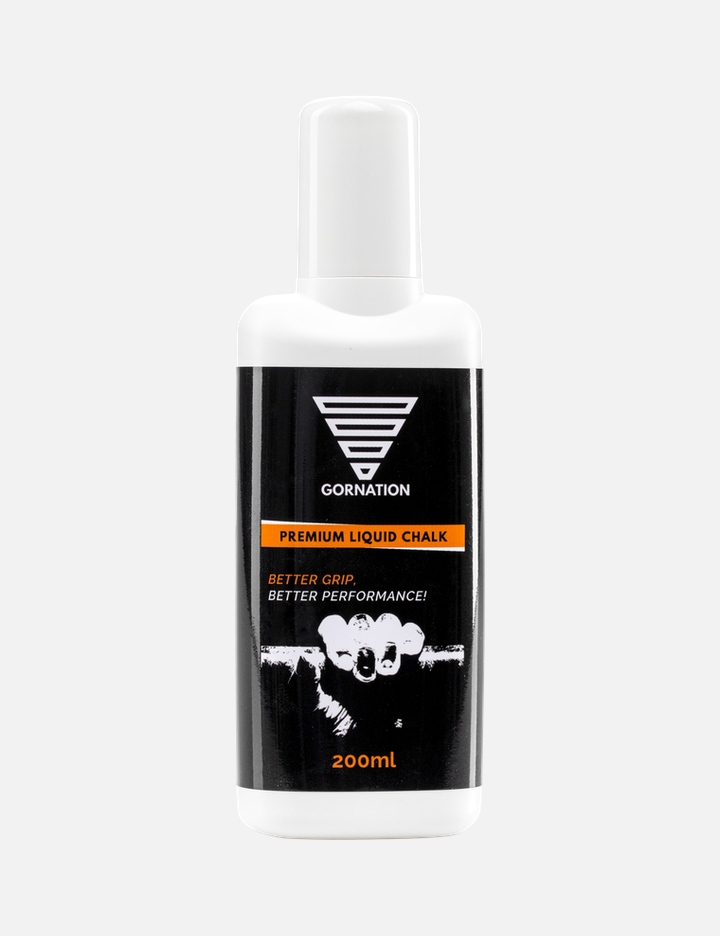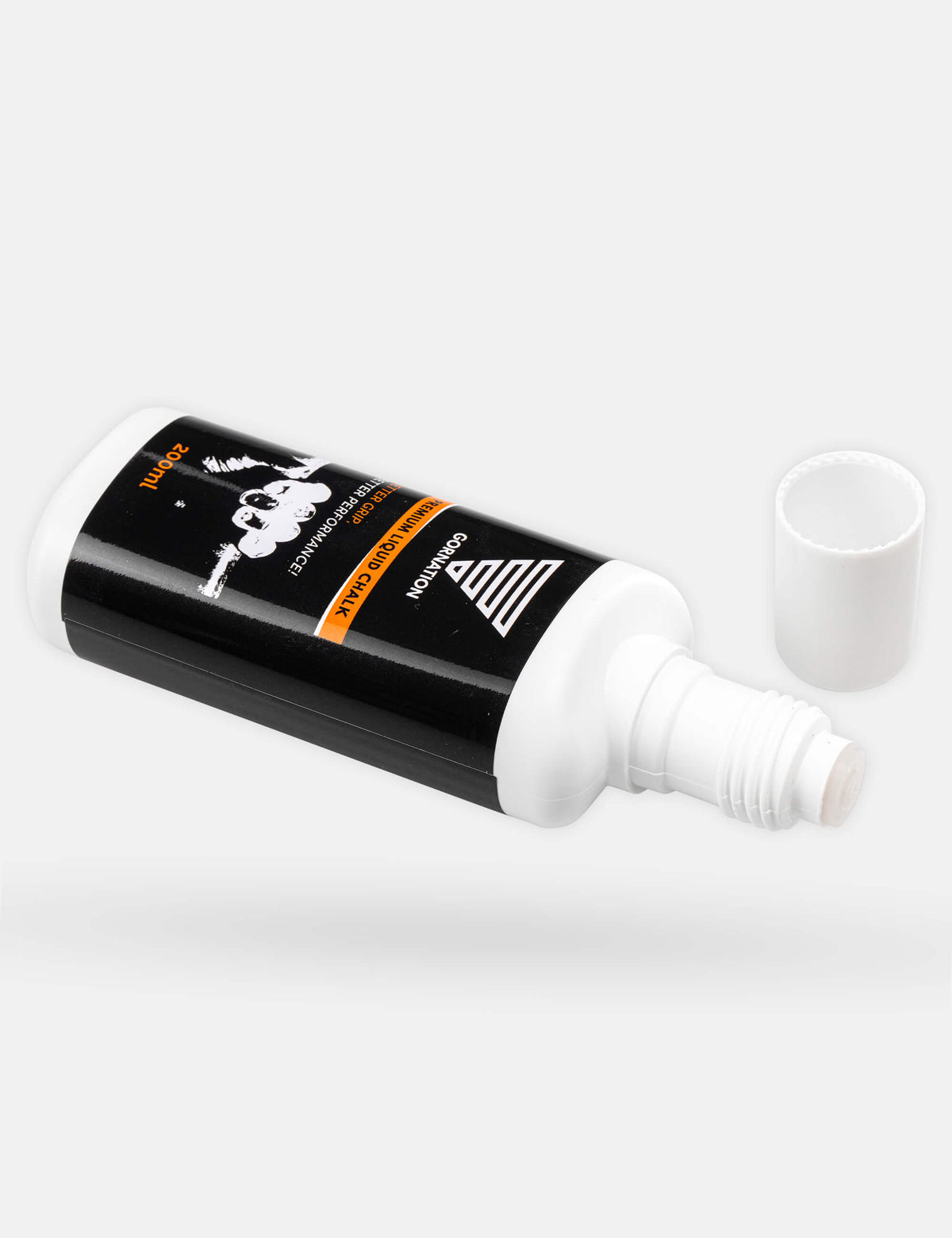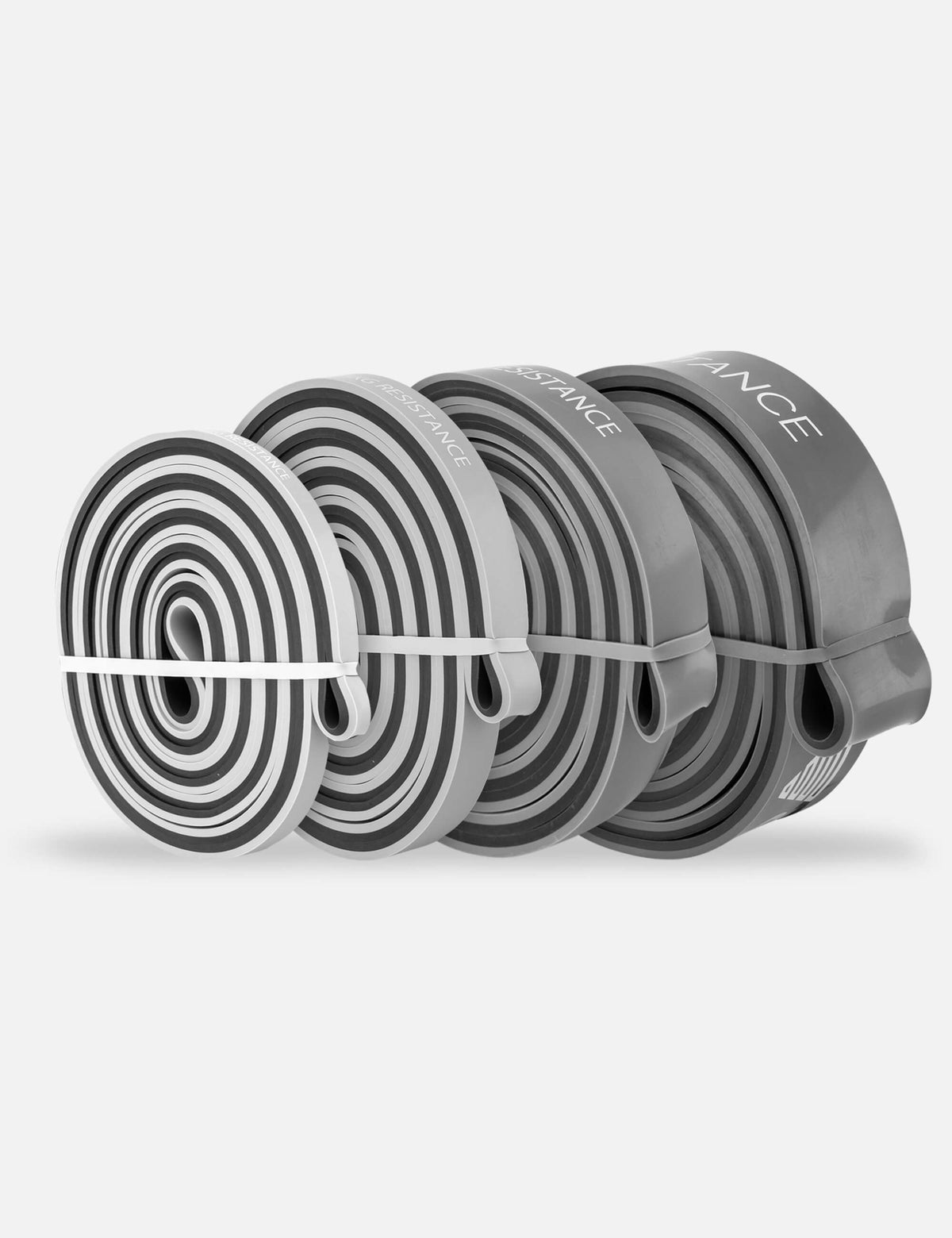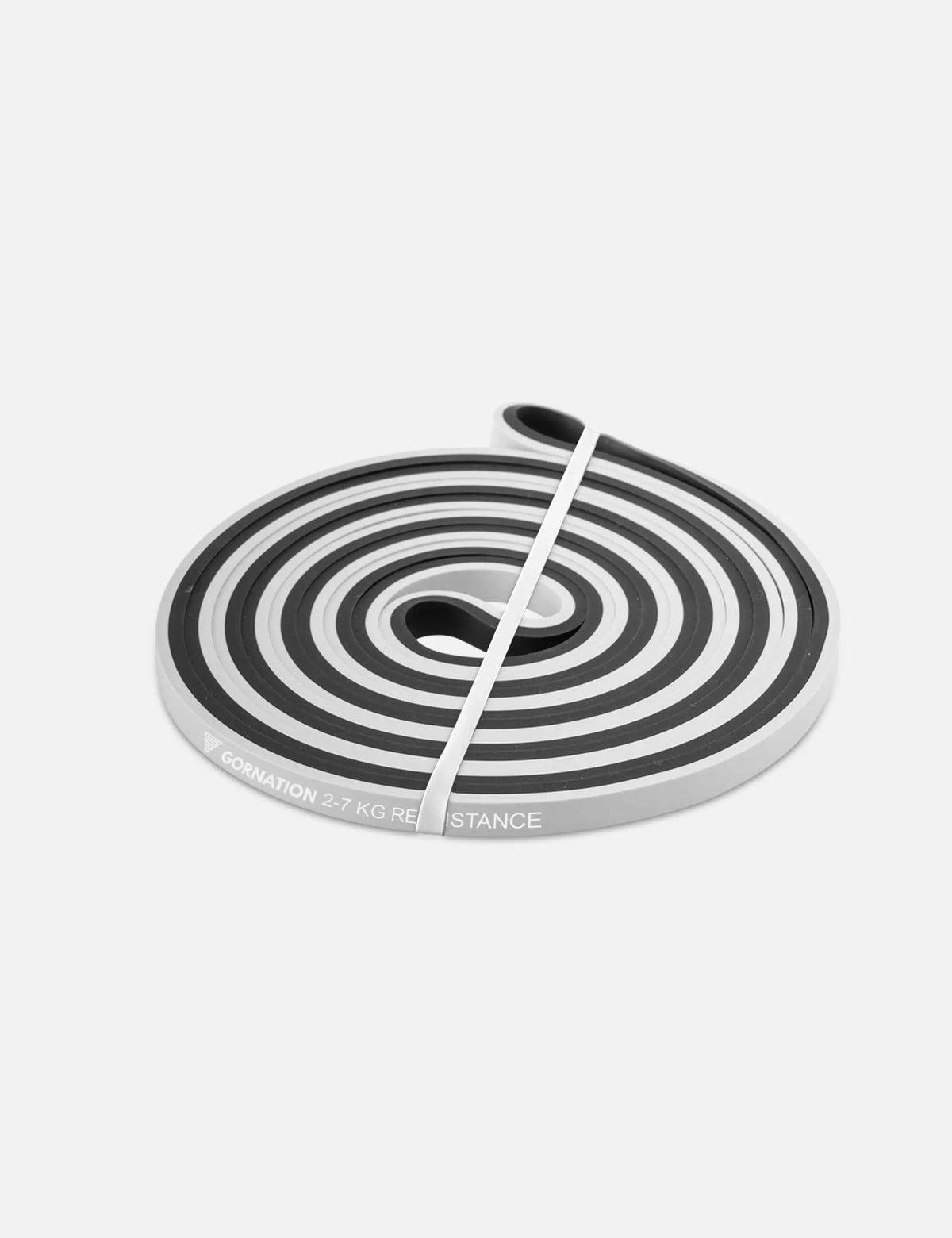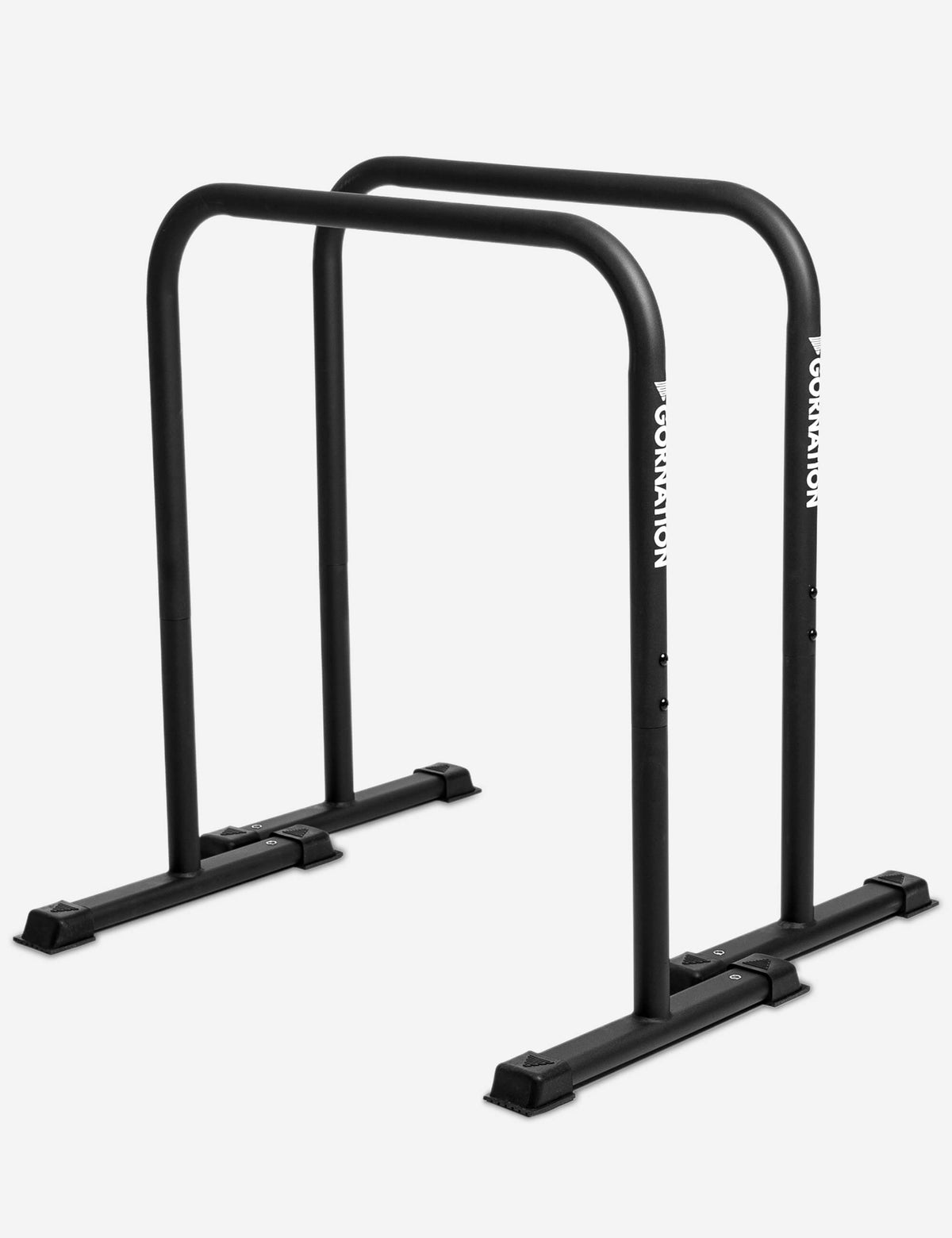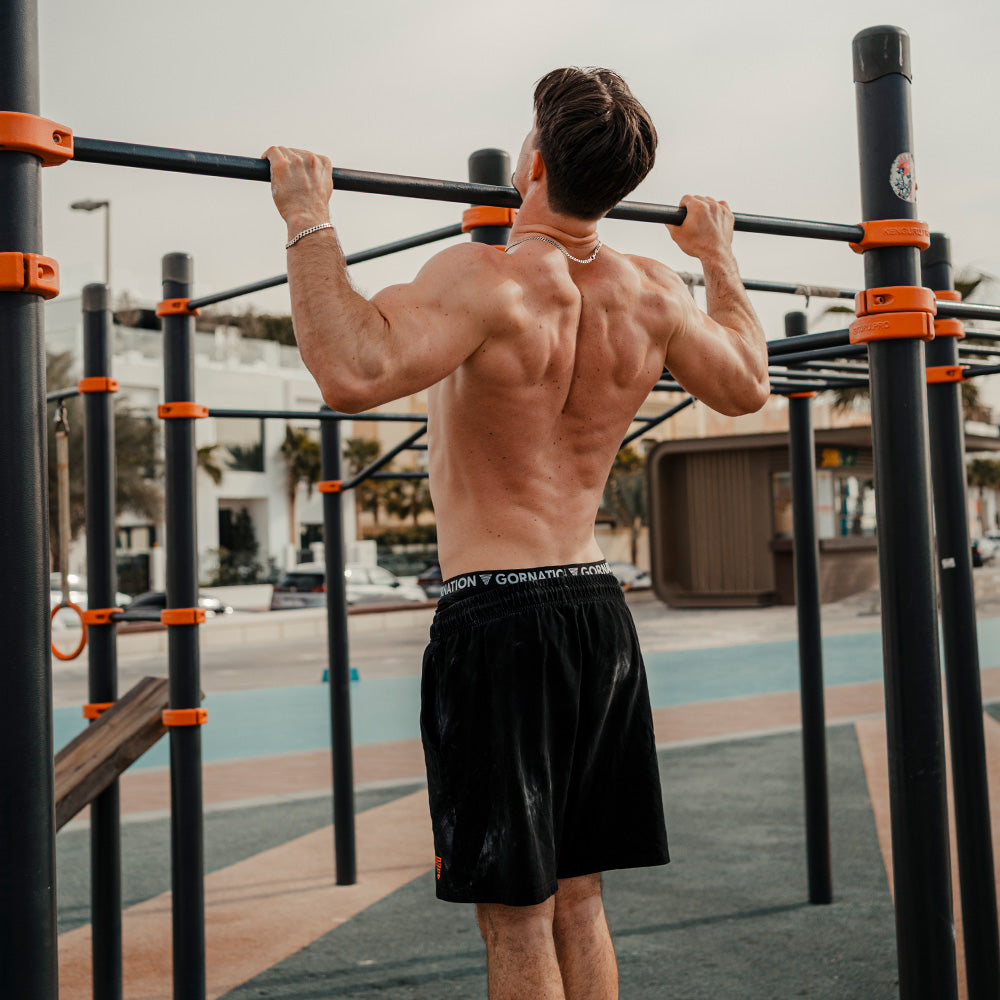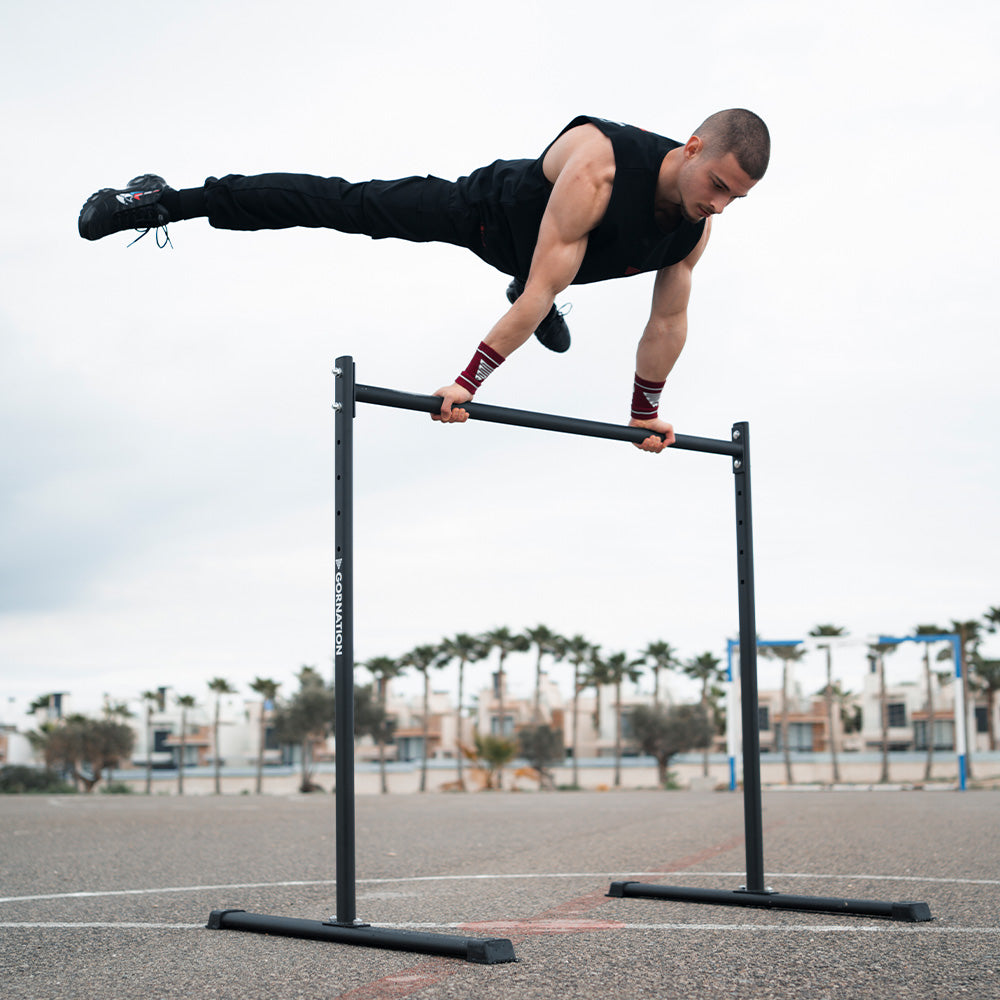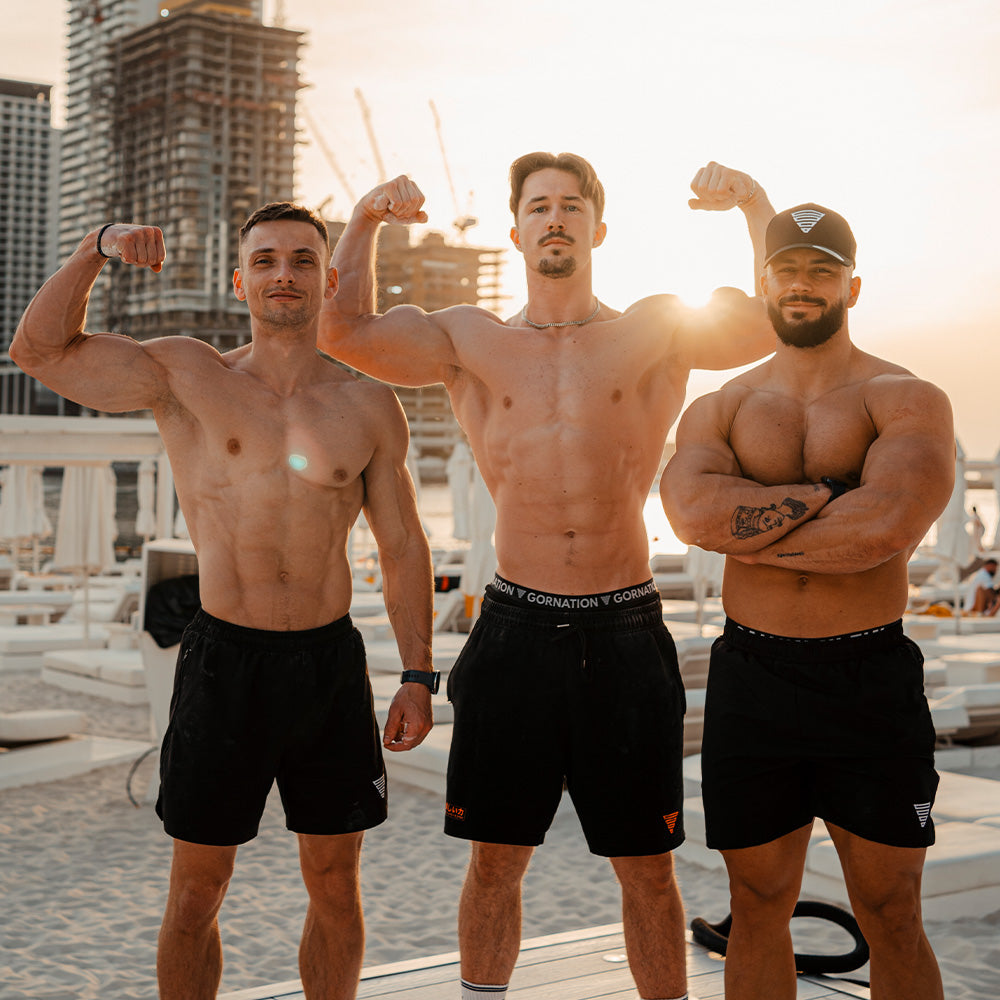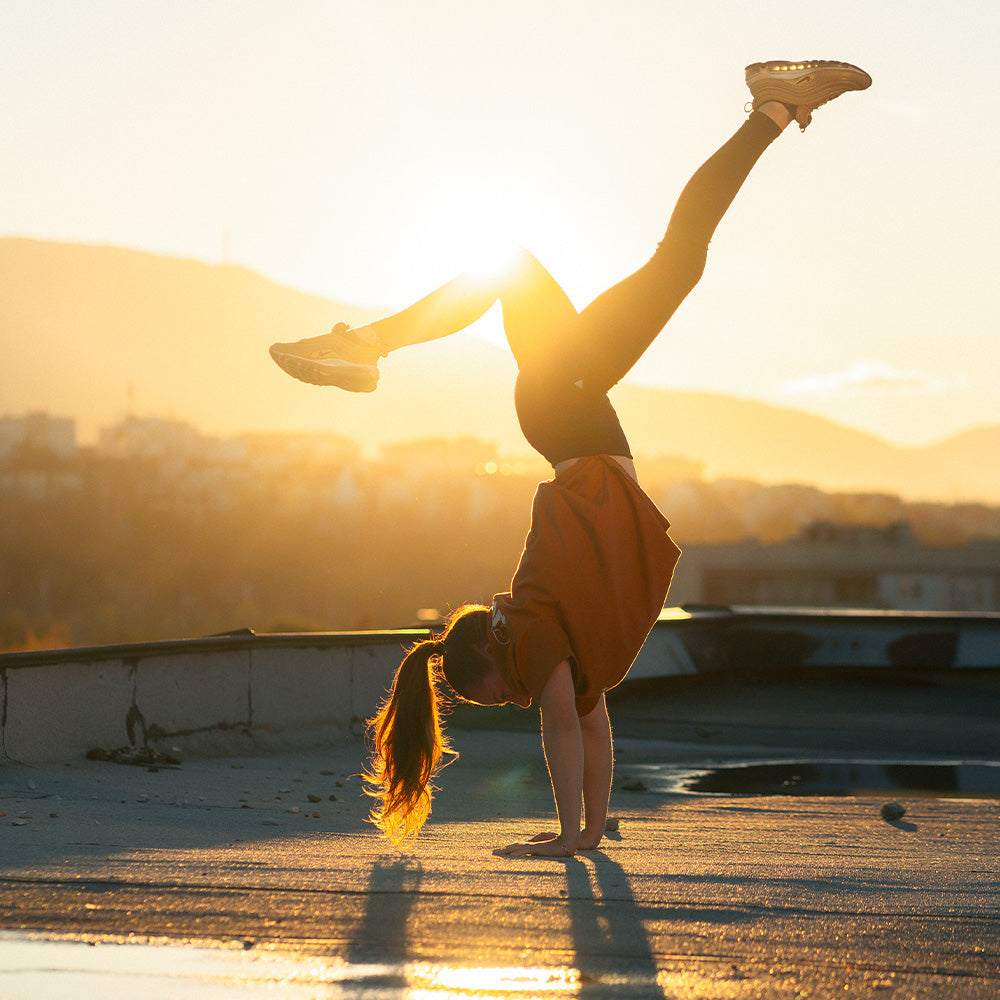ALESSANDRO MAINENTE | Calisthenics Training Advice | Interview | The Athlete Insider Podcast #54
View the interview here:
Or listen to the interview here:
The text of the interview (translated automatically):
The biggest mistakes of the athletes is that they push too much to failure and that going to failure is the worst thing that you can do you gorillas welcome to the athlete insider podcast by GORNATION my name is phil and today's guest is an italian calisthenics coach somebody with over 10 years of experience in gymnastics in mobility i'm happy to welcome you from italy alessandro manente thank you philippe the pronunce was perfect thank you thank you i'm always for the name i'm always hopefully i pronounce it right um yeah i'm really happy that you that you're here um kind of jack jack venati connected us uh you're his coach uh which already means a lot um if you didn't see the episode uh we interviewed jack vanati who is two meters two centimeters and 103 kg heavy and alessandro is the man who lifted up his legs who was uh who enabled him of course with hard work from jack but uh who helped him to achieve this incredible goal so yeah i'm really happy to welcome you thank you me too thank you for the opportunity so yeah let's kick off who are you what do you do do you want to pretty quickly present yourself well uh my history is uh is a little bit strange because uh i've played the football for or soccer maybe soccer is a good the good word for a lot of time then i have torn my acl so ligament of my right knee and after i have decided to put my effort in something that basically does not use the lower limbs so upper body work so everything started with the gymnastics as a play as a game and with the time i started to uh to like gymnastic a bit more but for sure the main problem was my age i was too old to perform on some apparatus like for example bolts or advanced skills on the floor or on the p-bars so i focused for the most on upper body strength so on the p-bars on the floor on the rings and with the time i passed on the opposite side so i started to coach gymnastics but with the young kids and the young girls so basically doing a physical preparation bought for men and but for women and in the same period i i met coach summer maybe you know who is coach summer christopher summer he's the owner of gymnastic bodies and i think that he was a pioneer because he moved the knowledge of the bodyweight training outside from the gymnastic gym and i think that he was the first because he began around the center line 2008 so not one or two three years ago more than more than 10 years ago and i followed him into his seminar from 2011 in the same period i i spent basically my work on study and listening uh other strength trainer like tushar or berkozanski or zatriasky or your king i have probably you can see my background i can say 100 names but the most important thing is that all of them are person who share principle okay so if you take a program that works basically it share the same ideas the same logic of of another program that works too and with the time what you can do is refine your knowledge about programming with some experiment for sure because for me jack vinati was an experiment and with the time i had the opportunity to improve my ideas of training especially by training not me training other people because everyone basically has its own story and it responds different from another person so if you can train 100 people and after i take you as a student probably you can fall into this group of 100 people because they are all different if i use the same logic that i used for me 10 years ago probably i can't trade only a people like me a person like me and for me this is the the real uh the real idea of becoming a good coach working with many different person as much different as possible so i had really uh tons of students i have many results you can check on my instagram profile i had the students with the iron cross maltese reverse muscle up one one pull up with the 15 kilograms at the weight of 60 kilograms so venati and uh and so on so my profile is public and you can see so for me coaching is really funny for me because it's finding the the good strategy for every single athlete and understanding what uh work best for someone and what does not work for another one and fitting experience fittings my notes and finding strategy and this is what for me is coaching i really like the the word experiment uh that you said uh with with that jack was was an experiment um because um like um i can imagine that being a coach is always like uh the first phase is i guess analysis like in analysis sorry uh like really uh understanding the person's physique the person's goal goals um and then to try out different things and see how they react with their body right of course every type of experiment should be done with logic so you have to put together some ideas and think about what i can produce with those ideas because if there is no logic what you cannot you can expect you can expect that maybe something happens but is not dependent on my ideas because it can be casual not causal okay so there is a bit of discern different so experiment is good but with logic okay so um yeah let's get into into calisthenics um tell us how did you uh get into into this sport maybe it also plays together with the fact that you were too old for uh gymnastics uh back in the days and um i often hear calisthenics athletes uh saying that the main difference between calisthenics and gymnastics for them is that calisthenics you can start at every age uh and gymnastics there is like you have to start early this is like what a lot of calisthenics athletes say but um maybe you can share your opinion about the really the difference between gymnastics and calisthenics well it depends on what are your goals because if you want to perform like yurikeki or koehuchimura you should start when you are very young because there are a lot of skills especially skills with the anage technical component and you need to start when you are young because you have a very big number of skills on six operators and you can trade 24 hours in a day because at the beginning you need to adapt to a niagara volume time over time little by little and only maybe when you are 16 or 15 you can try you can train six days a week so uh if you want to perform on high level technical skills you need to begin gymnastics when you are young that's for sure five or six year olds but if you want to specialize on a strength training there's not a real age of course you need you need to take into account that as you start when you are old maybe 40 maybe 45 you need to consider that how your body responds to strength training in the sense of physical adaptations is different compared in a case where you begin when you are 20. so there is a different anabolic response there is a different hormone response and this for sure is linked to how much time you need to recover and if you need more time to recover you have less time to train or you need to wait more time so if you begin when you are not young you need to manipulate different parameters so that you can still train often and you can still train harder but you can for sure obtain some results i think that jack is one of uh all the cases so i think basically the difference is this what are your goals if you want to perform a triple back or a double back with the two full twist you need to start when you're young if you want to perform a full planche you can begin when you have when you yes when you have 40 years old when you are 40 years old i my one of my oldest client as uh 50 years old and he's 50 and he can perform the shadow planche front lever we are working on the one arm pull up so you should consider all these things how the people is going to respond how if the person as as some injury or maybe in the past there were some injuries and you can fit all of this problem with his life so how many hours he's working eight hours seven hours six hours what's the type of work he's standing he's working she is sitting on the computer he's working with the upper arm because everything counts interesting you talked about manipulating parameters um i think uh one parameter that directly jumps into my head is the training intensity so the the rpe um i think uh is like one important factor um what what else is there or maybe you want to also say something about the intensity of the workout well i do not use the rp okay okay so i think that we can consider the rpe in three cases so we have beginner we have intermediate and we have advanced athletes the problem with beginner is that they basically their brain is ignorant so they think they are training at ninety percent of intensity but does not 90 percent because their brain ideally can be activated only for the 30 percent so rpe is not useful because i can tell you performer the top single and rp rp e9 bar maybe for the beginner this is not rp9 is eight maybe seven okay if we are lucky so the opposite problem comes in the case of advanced athletes why because they tend to push too much and they tend to overdo and this is not good because they can accumulate too much fatigue fatigue and they cannot recover so the intermediate maybe can use the rpe but i'm not a big fan of it i prefer other ways like for example using a buffer or so that basically i'm sure that all the repetitions or audio second are good or almost good okay the rpe can be very good if you work with the weights wait so wait it's uh pull up or weighted deep and in this way you can find for example the top single and then perform some back off work or you can find the 3rm and perform a back of work but i'm not a big fan of it so i've built for example jack with that using the rp or another of my strongest student francesco castellini now he's able to perform 30 seconds for plants and rings and when i pull up with 15 kilograms or if you want to try eight one and pull up down like this way so fast one second in the top three seconds down okay and i have never used rp if you have a good idea a good logic about the program you are going to write you don't need to use a drp you are not fortunate you can for sure is an option why not okay get it um so maybe you want to start sharing a little what are the if not rpe uh what are the things that you work with what are the parameters that are useful and that you work to achieve these goals with your athletes okay from my point of view the biggest mistakes of the athletes is that they push too much to failure and that going to failure is the worst thing that you can do there are very very very good number of motivation for example the first one is that the technique is going to fail so if the body becomes bad the brain becomes better improving the technique uh what happens if my technique is going to be bad what i'm learning i'm learning a different exercise so if my goal is performing a good planche with a hollow position and then i perform the planche to failure i'm going to lose my protraction so i'm learning the branch with arched back this is not good okay so i'm going i'm learning i'm teaching to my brain to learn a good thing and bad thing in the same moment so what the brain is going to learn not the first not the second something in the middle but not the best okay one second uh problem is that with calisthenic basically we are working on uh maximum strength and uh sub-maxima strength and we need to think that uh the fibers that produce the good the biggest part of the effort are the fast twitch fiber which are type 2 x and if we train to failure we are going to shift those fiber to the type 2 a which are not made to produce big effort and this is what's happened with bodybuilders bodybuilders are big bigger they tend to have a type 2a fibers but they for sure they are not as strong as the weightlifter weight lifter does not train to failure so another good thing about don't trade trade train to failure is that if you add some buffer so maybe you train you have to perfor you can perform uh at the max i can say six rep if you train with two reps or two wraps you have the possibility to reproduce this training session more time in the week because buffer can reduce the fatigue if you can reduce the fatigue your brain your central nervous system can recover and you can train with the same intensity with the same volume more time during the week if and if our ability to improve an element depends on the how many times we can reproduce this movement correctly if we can train more without injury we can lean you can learn faster so the idea is train smarter train better not more okay so if you ask jack vinati and not also jack the first impression that my athletes have is that wow i i i i don't feel the training session it was easy but but that is that's the goal because if it if the session is too much too hard you are accumulating too much fatigue okay uh another thing another another idea i can give to you is that for example uh if the speed of your repetition is going to slow down too much you are losing the benefit of the speed of the movement for example i don't remember if it was 2016 or 15 it was made was made an experiment a study where there were two groups and basically with the same intensity they did different training session one to failure the other one while holding the same speed of the movement all almost the same so basically one group with more repetition for sure closing to failure maybe six on eight repetition the other one last repetition something like three or four on a maximus maximum of eight repetition and the first group the one who trained closer to the failure they were bigger but less strong the other one the group who trained with less repetition but the more speed they were stronger so the speed of a movement is just something for me that is very undervalued but is really really very very important so i prefer for example slowest centric faster concentric always okay so the idea is train with buffer so that you can train more this is oh well i think you can already like i hope that you really you really can understand one and one of them or whatever said it's in english for me it's not easy but i think that it was clear i think it's super clear really it's uh like um sharing this is uh really eye opening i think um like i hear um it's really funny you know like just to see the these uh calisthenics athletes how they split uh like how the opinions are separated in in this topic because the ones are like really uh 100 in every session i have to be completely empty i don't have to like a good session is only when i'm not able to hold any uh any move at the end anymore and then there is the other um part like with your opinion with uh like slowing down the intensity um training more often avoiding fatigue avoiding um yeah avoiding soreness i guess as well so um really um just being able to work out more often at a lower intensity yes uh well it is not sun it's not always a american intensity because if i program uh so in a way where in a week you have to train at 90 percent of the intensity you train all the days 90 of the intensity but you can do that only if you have some rapid reservoir because in this way the fatigue is less so moving down the intensity is something that you can do in a specific moment but is not always the best idea for example uh when i needed to teach the one arm pull up or coaching someone on the one arm pull up i i use it to program with for example elastic band or a pulley system where you can set up some weight and basically take off some weight for you from your body weight and move from lower intensity to ag higher intensity in a time of uh 10 to 12 weeks so is a long process when you are at low intensity you can play with all the intensities of this range so something in between eighty percent and seventy percent then when you move in a range where you are training with ninety percent eighty-five percent eighty percent it's not a good way move the intensity too much down because you are losing the feeling with the weight okay so there is a phase where you can do some you can play with intensity with low intensity but when you move to eight intensity is better holding eye intensely okay you can still push for sure but if you push you need to deload offload okay so with the more frequency that's that's the the only way okay there is a a good test that you can do uh if uh the strategy of an athlete is good is um observing if he is improving constantly i'm not saying when uh with a linear okay in a linear way maybe there are some fluctuations some ways but if you connect all the high peak of every way you are going to see a line that's not horizontal is a little bit inclined if you see an athlete and basically his uh his form his performance are doing something like that basically there is something in the training problem or in the long term and also in the medium terms uh that does not work so i decide to train in some way because i want to see a linear progression so constant improvement month over month but usually is cycle over cycle because for example conjecture a cycle of training for the one arm pull up is composed of 12 weeks so i can see the big difference in terms of improvement from the first day three months later and maybe the progress from month to month is only 0.5 kilograms but maybe at the end of the month of three months he has improvement the the improved the one rm maybe five kilograms or six kilograms so this is uh the idea okay um yeah i really like how you go into depth um with uh with your explanations etc let's say we have somebody um uh the listener he is like he is stuck with his uh tuck planche uh he's like um not progressing he's uh working out uh regularly on the tuck planche but he's not achieving the straddle planche in general like somebody with this with this fitness level um how do we start programming for him how do how would you start as a coach um what would be his your advice to him uh to to start um yeah creating like a really a program for him to achieve his goal of the struggle planche okay so when someone contact contacts me or send me an email i i'm using to ask her show me how you can perform the planche so the main problem is technical so if you cannot pass into the straddle planche and you are performing the planche like that or you have a pain in the forearms is because you are not using your shoulder okay so basically when you you are feeling pain in the forearms is because your forearms are trying to compensate for the fact that you are not using the shoulder okay and if you are perform the planche and you are experimenting pain in the shoulder is because you are not using the arterial deltoids but you are using accessory muscles like for example the lung head bicep but the lung hand bicep can maybe assist the shoulder flexion that basically is what you do for the planche for only the four percent of the entire range of motion and maybe you can use the supraspinatus but those muscles muscles are not big they cannot support the body and they can injury faster so the first thing the most important is evaluating the technique i want to see if you are good in the posture if you are good in the shoulder blade activation so you should be able to press without losing the depression okay and the same things is good and valid for the one arm pull up if you are unable to depress and pulling without losing you are going to use your bicep and you are going to to injure yourself on the middle part of the elbow so technique first if technique is bad we need to find a progression where technique is good so maybe we can regress for sure for some people is not good they think i have to regress but it's not my problem you have asked me how can i help you so if the problem is little so if the difference becomes between perfect execution and your execution is little we can scale down the intensity maybe of the new progression so that you can activate your lats you can depress and then you can use your shoulder okay so when uh uh we have find the when we can find a good progression later we can adjust the programming so basically i'm going to ask you perform your best and then basing on your best i can choose the correct number of seconds and sets my suggestion is working something like in between the 50 and the 60 percent of your maximum seconds so if you can do straddle planche for ten seconds you can work something like in between five or six seconds so for example in a three week cycle three weeks a cycle you can begin working with the six sect of five seconds and maybe do this for two times in a week then on the next week you can move from a six set of five second to five set of six seconds so we are holding the same amount of total seconds but we are increasing the number of seconds so we are reducing the buffer okay and then in the last week i'm not sure if i can increase the seconds because i i i reached to fall in the seven seconds range that that is not the best idea so is better moving from five set of six second to six set of six seconds and then in the fourth week i can perform a little deload that basically mean cutting off the sets nothing more and then in the last days of the week you can perform a test and for sure the maximum number of seconds is improved this is the basic idea of the fundamental exercise progression then you can insert exercise that can help the big exercise the first one the fundamentals with some dynamic work that basically can stop in a dynamic range on the isometric position but you don't spend too much time in this position because you need to take off some specificity okay so you can push a bit more but without the same stress of the fundamental exercise and all the accessory exercises are done with a lower intensity okay so for example if you are doing planche prices okay in the end you are working at 85 percent with the triples or double you can perform as accessory exercise enough press so from the support position move up into the planche and move down but not at 85 percent maybe 80 or 75 percent so lower intensity you can push more repetition okay so this is an idea for the planche so begin with some buffer increase repetition or seconds if you can in a specific range that usually is the off of the maximum number of seconds or the sixty percent if you need increase one set and then on the fourth week the load this is basically what jack is doing i push a bit more on three week tweaks but i deload on the fourth always and there are some people that maybe say you are trying and testing the one or m or the maximum number of seconds every three weeks yes is only a test is one set nothing more if you make some sets and use them to move closer to your best and then you summon the intensities of all set and then you divide for the number of sets the average intensity is not more that 80 so simply you are recalling the the exercise a good intensity and you are not injuring yourself that's for sure i i don't have athletes with injury so no tendonitis no no i think that from francesco castellini he he is the guy who is able to perform one arm pull up with 15 kilograms he's training one arm pull up four times in a week okay since eight months ago no it's in the 90s so planche push-up rings plunge he's able to perform the elevator the reverse muscle ups no problem at the elbows no problem with the shoulders so planning is the key of course you need to adjust to what is necessary so if your athletes is telling to you i feel a bit uh sore i i feel that i have too much fatigue okay we can take we can take off one rap okay so there is always the time to add something more but if you reach the point where it's too late there is no time to take off that's the problem and if you reach this point it's not a matter of uh if i'm going to injury myself it's only a matter of when soon or after later okay so if we jump into um one training of a like of a statics move you you just said um four or five exercises uh four or five uh sets each um is this like a typical training day for to to learn static moves well usually i plan on one exercise or two for a specific goal so for example in in a microsoft micro cycle i mean one week in a week we have three session for a planche and in two sessions usually or maybe also all the session you are going to work on the specific isometric position or in the exercise where you want to improve and then there are some accessory work so one fundamental exercise all on all the three days so isometric on monday on wednesday and friday and then maybe uh or what is that on wednesday that's the light day i can put some dynamics or i can put some specific core work for example uh jack i remember has a sound limitation on uh lifting the leg so legs so maybe he is a little bit weak in the glutes so i can add the exercise for this part and if you have maybe uh some spot for some more sets i can add some front rises with the band for example uh or i can put something more general like for example under anderson push up with the fuller range of motion so there is always a spot for specific exercises always then you can add something more but no more than two exercises for the same goal never also for example for the one arm pull up you can have four session and if i do four specific session i don't have too much necessity of adding more maybe if i have imbalances or if i need some more strength in a specific part for example if i see that after the pression of the one and pull up this part is very um explosive but this part not always very good maybe i can perform some depression for sure or for the one i pull up i can add some archer okay the idea is inserting the exercises with some logic they should be similar to the fundamental exercise but not too much so when i pull up then archer is good or rope climbing or simulating the rope climbing so doing pull up a lot of this way or one arm roll or one arm bicep curl okay always body weight training i don't use weight with my athletes i'm not used to they are they they can be used if you want to make your session a bit a little bit more funny but not for for specific goal goal if you want to have numbers all of my athletes do not perform more than something like in between a 12 and 20 set in a training session so 12 20. that's not too much i understand but it's not important how much you do if what you do sucks is not useful you need to perform a good quality work with good speed with good schema with good trajectory good with good activation that's enough okay get it um in the beginning you said two exercises for one for one goal is it meant like in these four trainings uh the person doesn't do more than two exercises for to reach one goal yes so like four days in a week i train one on pull-ups for example and there are only um two accessory exercises for the one-arm pull-up plus the wanna pull up practice it depends on the phase where you are if you are far away from eight intensity you can perform more work because intensity is low and you can recover easier the recovery is easy basically okay you can recover easily okay when you move to high intensity the stress the fatigue on the central nervous system is very eigen so you don't have a spot for something that potentially can increase the stress so as you move in the range 80 90 percent you have to reduce and in the most of the cases perform always and only the specific movement one accessory not not too much when you are maybe in the phase from 80 to 70 or 70 to 60 you can have one more exercise for the scapular depression you can have more archer you can have more general uh pooling movement like to arm pull up and you have something lying for the bicep and then you can have something for the core so there is a time where you can do more there is a time where you need to focus on the specific movement okay get it um let's talk about some some general advice some general things that you're a big fan of you said like weights is one thing that you don't like too much to achieve the athlete's goals but um yes uh for example what's your opinion on rings training is it is it helpful um yeah there are also like different uh opinions on that okay rings trainings is very helpful at full if you want to become strong on rings because for sure there is a a big problem that is the instability factor okay the instability factor uh takes the the biggest part of the energy okay when you become proficient of uh holding the rings together all the things become really easy okay but it takes times another problem of the rings is that the they stress a lot the shoulders and the rotator cuff so if you don't have a good balance in the shoulder your risk to injure yourself especially in the long head of the bicep or the subscapularis or teres minor or supraspinatus or maybe your sternum especially if you approach the rings where when is not the time when uh it's too early for you okay so um if you want to be strong on the rings you should work with them carefully because the amount of stress on the joints and on the connecting tissues is uh definitely eiger compared to the stable support like for example floor or the p-bars another problem is the stress on the bicep and on the elbows so if you are if you have some planes of performing cross or planches or month is work you should consider the amount of stress on the bicep so it can adapt but it can takes a lot of time okay uh for me personally uh i remember it was 2016 when i i done i've done the the first iron cross on on the rings one of my problem is that uh rings was causing to me to me a restriction in in the joint in the connected connective tissue of the joint at the point where i wasn't able to bend my elbows more than that okay every time i was trying to squeeze my forearm i i had a sensation of cramps but it wasn't cramped okay uh it's very strange it's very strange uh simply i have solved it by reducing the volume on rings and increasing the flexibility of joint tissues okay so rings are funny there is the the correct moment to introduce them in your training okay other tools that you're a big fan of um that like somebody should have in in their workout uh well there are some period in the during the year where i spent two or three weeks working on high repetition life for example something like between uh 20 repetition and from week to week down to 12 to failure okay with slowest centric and generally speaking slow movement because in the way in this way we can increase the total amount of tension in a set we can produce a situation where tendons can adapt easily so also jack every 12 weeks he performs three weeks of anatomical adaptations so that i can prepare his joints for the future cycle and in this way he can hold more intensity more volume time over time so this is something that i'm constantly doing with more advanced athletes and there are many way to do that for example in the one and pull up if you are training with the pulley system you can stay in something like in between 50 and 60 percent and perform one arm pull up for 15 20 repetition on week over week increasing a bit intensity and moving to 15 repetition and then 12 repetition in the third week in the case for example of an isometric old i i continue to increase the number of the maximum seconds at the point where maybe uh one of my athlete can hold uh an isometric position for 30 seconds if he can his training as something like in between 60 65 and he stays with the this times for one month and in this way he can adapt and then we can pass in the next progression or we can add some weight maybe two kilograms weight in the waist so that we can make the position harder and then when we can take off the weight basically the body weight isometric position is definitely easier so really there are tons of strategies that you can use in order to improve your strength basic strength or specific strength strength it depends on you it depends on logistics so if you have for example loop bands or you have only the pulley system or you don't have a ike bar you have only low parallel bar and you can make some decisions uh basing on what you have at the moment this uh this for sure you can you can increase your strength and for example the number of repetition of one exercise in two ways you can compensate repetition or you can increase the warner m are you following me so i can make an example i can increase the number of one arm pull up by increasing my best weighted one arm pull up if i can do one arm pull up with the 10 kilograms more maybe i can do seven one arm pull up with only my and my own bodyweight body weight but i can also reach the same repetition if i start with a number of maximum repetition equals to 3 by programming with the idea of increasing repetition so for example i can do only three repetition of one and pull up i take my three weeks of training i begin with the sixth set of one and then in the second week i move to three set of two and then in the following week fourth set of two or fourth set of two and then in the fourth week i'm going to test maybe my maximum number of reps is now 4 then in the next cycle i can begin with 4 set of 2 then 5 set of 2 then three set of three and then a test and probably my four reps are faster than before so for sure i'm not as the previous month i'm stronger so i can move from three sets of three on four set of three then five the set of three or three then i test and maybe i can do five so is uh accumulating repetition process so i think that we have there's a two big situation or strategies that is basically improving your maxima strength or the accumulation of the repetition time over time okay and is this a way of programming also the way to avoid a plateau and to stagnate with with your own performance uh usually i i analyze the program and i must understand why there is a point where i cannot move forward let me explain why training sometimes is more complex than what we think if i have an athlete which basically is uh so explosive for example in dynamic muscle up or one arm pull up probably this athlete has more fast twitch fiber so i can expect from here from him to move more and reach more than 20 seconds in isometric hold because he is not made to do that and after two one month cycles where i can see that he is not improving probably i should make this a reflection okay so consider also the genetic but you can understand something more about genetic only by training your student time over time and for example if i have a student um that responds less to eiger repetition and nine seconds i prefer to older in the program always less repetition and less seconds and i use more progression so that the gap between the next progression and the one that we have already mastered is a bit less there is more carryover between the two progression and with the the students i tend to stay in a higher intensity range i'm not used to move in the 75 or 70 of intensity okay so do you understand definitely okay so um yeah like there are so many things uh you you talked about um that are important and that like uh you accumulated with your uh knowledge and with your experience during the years and um in calisthenics i would say it's still quite unusual i feel that italy is one country where it's already quite far advanced but like it's quite unusual still for calisthenics athletes to have a coach and there are only like a few uh athletes that that's that's at least my um my feeling that um say yeah it makes uh sense for me or like i i i invest into a coach so um to i think this interview already shows a lot of the reasons why why it makes sense to have likes an experienced partner uh at your site during your workout uh like you but maybe you can explain more in in your words why why does it think by why do you think it's it makes sense to have a coach and and calisthenics to reach the goals well i have a coach okay so he's trying to say but three years old i was 90 kilograms okay three years old no years ago three years ago okay okay i was 90 kilograms uh and i spent the time sometimes finding a way for improve by myself and basically i was overtraining so i remember there was a period where uh i wasn't able to sleep two hours a night something like that i always was something like that always rolling rolling in my bed no sleep so at some point you need to make some decisions so i found my my coach who helped me for the battery composition so i have improved my battery composition and basically i learned something more about training i think that having a culture it's a good opportunity to also learn something different from our perspective okay because i have an experience and another coach maybe has a different experience compared to mine but all coaches share the same logic if they have results so i i one of the few coaches in italy that on his own profile uh pushes his students i'm not fun to push myself i'm not a strong athlete now why because i'm older and i i never have to spend time to work okay so my idea is that also an athlete can be a good coach if he or she was a coached too because he or she can understand ideas logic he or she was exposed to some structure some programs and so on i think that all the coaches should have a basic knowledge about strength training that means understanding functional anatomy functional anatomy is necessary if you want to choose an exercise there are some people with the still want to split exercise on pushing and pulling this does not make any sense so i'm going to ask you for example the one arm pull up is pulling or pushing so if you will say question is because there is a trap okay so if you think about pulling in this part also your chest is working you can feel the chest works at the chest it's a pushing muscle so the one arm pull up is a pushy movement no we should consider the range of motion pulling is a shoulder extension so if i want to split the exercise on the correct family and i want to choose exercise for my program i should understand the functional anatomy if i want to program i should understand the concept of intensity how much time can i hold at intensity how can i perform a deload how much can increase the volume week over week and so on how can reduce fatigue do i add signs about overreaching how can avoid overreaching can i eat better can i sleep better and so on so there is really a mix of concepts that one culture should know of course there are always coaches that have students without knowing too much about science for sure but i train so many different people that i need to understand and to know more i have to say that past the 40 years you have more probability of tearing the rotator cuff for the bicep tendon so if i have people a person a student who is a 50 years old i must know what what he can do at what he cannot do because i'm playing with the um with the life of the people of the person okay if i i train the person at the point where he has an injury i'm affecting his life and what about if he's working with the the arm all the days a coach should consider also that it's not only about training is also having in your hands the life of a person that's also coaching i have only a few number of really really athletes and i don't have students who train eight hours a day all of them ever work they work eight hours a day in the industry they work driving a car they work in the supermarket their work they work um as a engineer in front of the desk or the computer you need to consider everything so it's not easy from a point of view being a coach and uh who is the the the like for all the listeners now um who are listening this and maybe some of them want to take the next level uh in their workouts who is the right person to to work with you what's uh what's important for you if you take a take on a new client uh okay i think that they can read this one which is periodization training for sport okay i don't know if you if you know this book yeah okay we will put the link in the description okay so uh you don't have to read the book and think about finding training program here here you can find logic here you can understand how you can structure a micro cycle a single unit of training a single week how to download how to increase your wanna m how to use a centrics and so on and then the biggest problem here is uh uh translating everything for the bodyweight world that is from my perspective a little bit more complex okay and who is the the right client for you so to the people listening um somebody is interested in working with you what's important for you if you take a new client uh basically there is no uh product results so if you want to improve and if you want to learn i do not make miracles okay um the if you add problems and if you want to solve it i'm open-minded okay uh i i have to admit that a biggest part of my clients already have injuries so the biggest part is still recovering from injury so when they have tried it again again again and they are at the point where they cannot train sometimes they come to me uh i wanna give you an example i have uh started the coaching with the guy on the the previous week and he is 22 years of old and he has a very powerful genetics so think about that he he was really able to perform seven one arm pull up but he told me uh i don't want to to to get another injury i want to train nothing more i don't want to hard myself no more okay so i still work with the who wants performance but he must understand that if he or she is in the case in the situation in the moment where he can push we are going to push but if i ask you to show me what you can do it should be perfect so i don't trust words facts always and that's the way in my profile there are only my students there are facts show show facts nothing more okay sometimes i understand that athletes don't don't search a coach because they they they are really discovered to have a good genetics okay and uh if you are in this case probably you don't you you don't feel the necessity of searching a guide okay because you see that what you are doing is working and i think as an athlete if what i'm doing works why do i need someone who tells me what i have to do because what i'm doing is working and it works because i have good genetics so it works no matter what i'm doing it is because i have a good genetics but maybe you have to to perform a question to perform a question i'm having results with my genetics and probably a bad program what about having a coach with a good program and my genetics so i don't know if giacomo vinati jack now is expressing his real genetics but when he comes to me was because he wasn't able to pro to progress also francesco castellini the guy who is able to do the one arm pull up with 15 kilograms he was a really strong i mean three four one arm pull ups on each side but he wasn't able to progress also in the planche six seven seconds so he worked with me two months 20 seconds plunge so good genetics for sure good genetics works good genetics with the good training programs works better so i remember when i was talking with the coach of yuri kiki bruno francescati and he told me that yuri really was a genius in his field in the sport in gymnastics but sometimes people say perseverance can beat genetics okay so this is correct only if the people with the good genetic is as as a bad training approach if you are training uh in a good way genetics always win always mean yeah kind of demotivating for the people who don't have the good genetics but well i'm not a person who say if you have a bad genetics don't train you don't know what is your genetics you have to try i i usually say there is a sort of invisible genetics that you have not possibly to cut your arms enough and see how many uh fevers you have in the muscles or seer or see or analyze how many mother units you have in your in your brain so you have to try why not i'm not a fan of try for one month and then if you don't have results take the calisthenic activity and put them in the angle the shadow now try and if you think that the genetic is a limiting factor maybe you think that there could be a coach with good experience that can uh take your genetic out of your body so when i was 90 kilograms uh i i i thought that my genetics was really really bad now i'm thinking in another in another in another way for sure by the way how how tall are you uh one meter and 70 centimeters okay so i'm short so 90 kg is is a lot yeah okay and um yeah like how how when you when you talk right now about you as an athlete um how is it today to to be a coach and as an and an athlete is it uh are you still like performing that you're happy with your performance or is it uh difficult uh for you uh i had to accept that i cannot train like before before i think that there was a period where i was able to train uh five hours in a day but i was studying at university so there was a lot of time the time is the problem because in the strength world you perform a set then you rest and you perform a set then you rest at three or four minutes so if you perform 15 sets you have at least more than one hour of rest and then i need to perform some mobility so that i can balance my shoulder and my posture and maybe i want to try some technical movement like when i was training one arm and stand and it takes a really a lot of time because you need to practice the one arm and stand for sure more than a planche for sure because there is a a very big technical component and so basically is that now i have less time so i have only one or two goals that are my my future goals okay now for example improving the number of one arm pull up or learning the back lever muscle ups but i don't have really a date with the time i'm not in a hurry for sure sometimes i think that with this uh um this body fat percentage i am in an optimal situation to push but i don't take too much time because i have to work maybe you have a family and you have if you are a single professional worker you are you have to adjust tons of aspects of your life and i had students i am online coaching sometimes i have some coaching course in the weekend not in this period but it's a matter of time or i think that in september everything is going to move back in the normal situation so probably in the weekend i'm going to coach somewhere in italy or somewhere in england in the next year so time is the big problem for sure i'm training definitely better now than when i was an athlete 100 yes i did a lot of stupid things i can remember them i i had for example a bicep tendonitis i wasn't able to lift a couple of teeth without feeling pain so it took about one year to heal completely and then a very long recovery process so i remember in this period there was coach summers with summer who told me stop because you are going to hurt and i stopped i was lucky you said the body percentage would be perfect to push or like can you explain that deeper what you meant with that calisthenic is a matter of relative strength so is a matter of how much power you can develop compare it to your body weight so the fat is a tissue without any utility because it cannot produce strength okay so uh it's not the case some of the strongest gymnasts have also allowed body fat especially in competition so the last tissue that basically does not produce strength you have to carry on yourself the better it is so the bad thing for me is that the rest of the fat is in the lower limbs so that if i have to perform blanches i still have body fat in the lower limbs and that's genetic okay and uh ideally holding your body fat in between eight and ten percent is the optimal situation because if the body fat is too low you tend to need the more time to recover from the fatigue if the bad body fat is too high can be a problem if you have to move your body okay it is nothing more simple than that so you can consider to cycle period where you have a low body fat and period where you have a little more of body fat and simply make some adjustments like for example i have to measure for example how many centimeters i'm gaining around my belly button and see how my skills how i'm going into my skills so for example i gain four centimeters my planche is going down so maybe only with two centimeters i can still improve or wholly holding my performance so i know that if i want to gain weight maybe becoming i want to put some functional hypertrophy my limit my edge should be two centimeters around my belly button and then maybe in a period of competition we can make a fast battery composition i can lose some a point of fat percentage and reaching a better body composition talking about tissues and and probably i can expect a better performance interesting and and the coke you just uh held into the camera does it does it help you the the coca-cola sometimes of course it's coca-cola with the zero sugar okay that's the only coca-cola i drink in this period okay but do you focus on nutrition as well with your clients no because is is a bit complex because sometimes happens that psychological situation should be managed and you need to be trained to do that so i i don't want to say that i don't want to add people with the nutritional component but i spent a lot of energy on what i'm doing in this moment like programming and so on having more energy for supporting people on their nutrition is something that now i i cannot do is simply a matter of energy nothing more okay but like uh to put it shortly because we're we have to come to an end uh closely do you think nutrition is uh is like an important factor so um do you sometimes have the situation that your programming should work well and it works well but the client's nutrition is hindering or slowing down the process yes in fact recently i've started to ask my students to write down in their program or send me every week their weight because if you are performing the same number of reps in seconds but with two kilograms more you are not the same of one month ago you are doing the same work with two kilograms small you are stronger than before so sometimes happens especially around christmas around christmas people over the world gain weight and and this is a bad problem of course after this period always i ask them to okay try slowly to move back to your normal weight so that we can we can see if the weight was the problem and if not oh it's it's very simple but i think in terms of performance weight can plays a big role i remember when andre larosa won the international bounty cup he was in a perfect shape really really i never seen him with the shape like that before never really he was perfect low body fat energy so probably he had a recovery diet in this way you can arrive to the competition with low body fat but you are full of energy because all all your stores are completely food there is no space for for more sugar in your blood and he won true great alessandro we are slowly coming to an end um we always have some quick questions quick answers at the end um what's your favorite food pizza pizza pizza the meat of the beef so i don't have you ever been in italy uh no no okay you can eat the there is a specific piece of the beef that is the fiorentina you can eat it in florence okay and uh is delicious if you if you like uh the meat wow for sure nice yeah like usually i asked the question uh pizza or burger and uh like all not all but most of the italians that i asked until now they all said burger so i'm happy that i finally have an italian who said who is pizza yeah nice are you a dog or a cat person a dog i had three dogs so the last one is a black german shepherd wow from belgium i know there is some sherpa also in the belgium and which are blacks but my one is a black german shepherd they are not pretty famous they have a very strong character and they are usually introduced into special forces oh okay okay so he's a good dog interesting even me as a german i didn't know that there are black german shepherds i just i of course i know the german shepherds but uh not the black ones nice um yeah what what athletes inspire you he he's a monster and i think that another one from italy is uh mayeli so and another one remember um name uh he's a really famous art artist uh eric ortiz yes he's he's a he's he's not human really he's still surprising me here over here he's an alien from my point of view do you have a favorite book i have to admit that uh i i do not read it too much okay you just buy the books and put them in the shelf behind you so you look smart all of them are science book it's also yes so when i when i have some free time i tend to spend some time reading something in a field that for me is new for example i i mean marketing outside the fitness world or something concerned with the harmonies or the physiological aspect of an athlete something like that i don't don't have preferences or maybe some books in uh biologic field or genetic or something like that okay uh the best kerosene event you've visited uh i am a judge in the international burning cup here in italy and i am a judge since 2014. so i moved around italy but my idea is soon or later visit the event in uh in colonia world of bar heroes the people yeah yes the fibo yes the fibo nice i know that the the staff of burning gate moved to fibo one year and i know that andre larosa moved to fibo also vicky santoro but i have never the possibility but yeah that was that was back in the days like um i think la rosa was there uh i think it was 2014 uh i or 15 uh one of these two years but back then it was a different organizer like uh today um we're uh we're also a part and and that but uh like the the organization is uh the company bars flex uh they are like organizing the world of bar um tournament and this is like um it's a big big thing so i'm happy to welcome you there and uh yeah i'm i'm sure you will i'm sure you will enjoy it for sure awesome um yeah last question what's your message to the calisthenics community um don't don't rush in the training and train smarter not more simply because we we need to train for all our all our life not stopping um in the next two years simply yes and enjoy the process nice how can people get in touch with you whether they find you how can they contact you about coaching well i have an instagram profile alessandro menente where you can see a message and i can write you back i have a site with a really uh tons of contents contents and also a youtuber channel with the 25 000 subscribers but everything is in italian so i'm waking someone who has uh who maybe have some intention of writing down the subtitles but it's really a long process so i'm thinking about doing that in the nearly future but not now for sure not now so use professional user as preference my instagram profile awesome alessandro big big thank you it was a an extremely interesting episode uh so much uh to think about so much that i wrote down but it's i think it's really an interview that i have to listen to again to to get all the advice and all the the input big thank you it was extremely extremely interesting and a big pleasure for me thanks that you took the time and um yeah thanks to everyone listening to this till the end and before alessandro you can say goodbye i want to say thank you as i said for listening uh one and a half hours interview big thank you if you stuck with us until the end if you have any future questions for alessandro maybe we make a second episode maybe uh if you have a lot of questions in the description just leave them and we will see if if there is like in the next year whenever uh a possibility to make a second episode who knows so um yeah give it a thumbs up helps a lot and apart from that alessandro you have the last words thank you phil for this opportunity i hope that my english was uh you know good to understand the concept or at least something okay um and i hope that my my idea my way of thinking about training can be something something good for your training for programming for understanding for learning for everything basically and you can for sure read the books for example the one that i have already shown and i'm pretty sure that you can you can understand with the time everything i ever really said for one hour and a half awesome then thanks again and bye bye to everyone .
 | 3.700+ Reviews
| 3.700+ Reviews Free EU Shipping above 100€*
Free EU Shipping above 100€*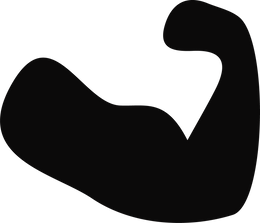 200.000+ Customers Worldwide
200.000+ Customers Worldwide Worldwide Tracked Shipping
Worldwide Tracked Shipping

